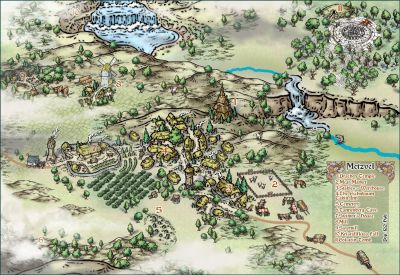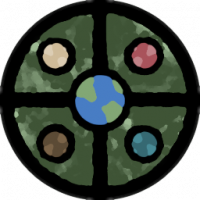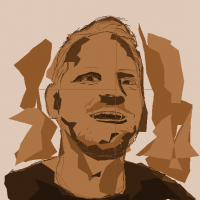
Monsen
Monsen
About
- Username
- Monsen
- Joined
- Visits
- 693
- Last Active
- Roles
- Administrator
- Points
- 8,947
- Birthday
- May 14, 1976
- Location
- Bergen, Norway
- Website
- https://atlas.monsen.cc
- Real Name
- Remy Monsen
- Rank
- Cartographer
- Badges
- 27
-
Question on XP Dev - RDATA and DLScan (Do I use both for sub-entity selection?)
The important thing to remember about dealing with a path is that it is a primitive, it isn't a container for other entities like a sheet, symbol or multipoly is. As such, you cannot access the line segments in the path, because it doesn't contain any, it just contains nodes. So there isn't a way to get a reference to these before exploding. You can figure out what the lines will be by looking at the nodes in the path, but there aren't lines to get references to. (Also, changes in the drawing list can cause things to shift around in memory, so holding a pointer to an entity in the drawing list that was acquired prior to a modification may very well not be valid anymore.)
I haven't tried exploding from code myself, but I guess that would be the EExplode function. That function does have a parameter of type EXPPROC which looks like a callback function, maybe that could be of some use in determining the new lines, but I haven't really figured out how to use it properly.
-
Edit direction
Not sure exactly how the algorithm is working internally, but it seems to like keeping the start/end node of the polygon (which would be located where you started drawing the poly in the first place.)
A few ways to deal with this:
- Try taking out smaller chunks, doing it over several operations.
- Draw a completely new polygon instead, using the trace feature of the tool to trace the part of the coastline you want to keep, instead of using the edit feature.
-
Eldritch Mishap
-
Configuring CC3+
-
Fractal Terrains 3 world generation
-
Winter Village style development (March 2022 CA issue)
@akbdeck wrote:
The thing to remember is that at a certain point the snow accumulation on the roof will cause the roof texture to no longer show any detail underneath the snow, even on a steep pitched roof.
True. You don't need much snow before any resemblance of the roof structure is completely gone.
-
Looking for a style to match Paizo
Note that unless you actually edit the actual bitmaps to make your own variation of the originals, you shouldn't copy the official files to other folders. That's just going to put in into trouble the next time you are viewing the map on a new computer since you will also need to recreate your copied folders exactly as before as well, instead of just relying on the installer putting things right (and it will also prevent others opening the map properly if you ever give someone the map file.)
-
Missing Files
No, nothing should have moved, everything was kept the same, just in the data directory instead of the install directory to maintain compatibility with old maps. Sometimes the same fill are part of several add-ons though, and sometimes it's just the same name, but completely different fills. The name "Wall Cobble Grey" isn't particularly unique, lots of dungeon styles include grey cobble walls, but they still differ in style.
In this particular case, I guess it was distributed with both add-ons, because an owner of Perspectives 3 isn't guaranteed to have DD3. I have everything installed, and I have that file in both those locations.
-
Nibirum in Minecraft
Anyone out there playing Minecraft?
Just for fun, I decided to implement the world of Nibirum from the community atlas into Minecraft. It is now available on the atlas download page.
This Minecraft world was made using a height map generated by the original Fractal Terrains file for the community atlas. The resulting world is a very good representation of the FT world. Note that it is exported using a equirectangular projection, so shapes are distorted in the same way as you can see on the atlas world map. This is particularly noticeable for Peredur and Ezrute
Now, the CC3+ atlas maps do not follow the FT3 map faithfully, it is more used as a loose guideline, and to provide the continent shapes, but many mappers ignore things like altitude from FT3. Unfortunately, generating a proper height map from the CC3+ maps is not an easy task, because they do not contain height data, so I had to go to the FT3 source. This unfortunately means that while the Minecraft map is a very good representation of the FT3 world, it will deviate from the CC3+ maps a bit, but there is no helping that.
Additionally, terrain does not carry over when using a height map, so I did some manual biome painting. I did a rough paint job trying to paint biomes roughly matching the CC3+ continent maps. In the end I did find the result quite interesting, although it can certainly be made better but that would take much manual work. Except for the heightmap data for the continents, the rest of the features are generated by Minecraft as per a normal Minecraft map so don't expect to find villages that match up with the location on the atlas maps, I don't have any control over where Minecraft places villages, temples and other structures.
I do think this map does a nice job in allowing you to explore Nibirum "in person" instead of just looking at a map.
Minecraft Technical Information
This map is for the Minecraft Java edition. I have no idea if it can even be imported into any other version.
The map itself is about 30000 by 15000 blocks, where each block roughly represents 1 square mile on Nibirum.
This map was made for Minecraft version 1.12.2. It was made for this version for technical reasons. 1.13 introduces a new map format, and tools to create custom maps does not support this version properly yet. Additionally, while Minecraft itself are supposed to be able to convert maps to the new format, it seems to fail hugely on this one, seriously messing it up when loaded in 1.13. Things seems to look fine at first, but exploring a bit quickly reveals that a lot of the chunks from the map has been replaced with normal randomly generated chunks creating a checkerboard of new and old chunks. So stick to 1.12.2 when using this map, which should be easy to set up a profile for in the Minecraft launcher (At this point this is also the best supported version for mods if you are into that)
The map itself was generated with a few mods in place to make a more interesting map, but the map itself is purely vanilla Minecraft, and do not require any mods to use. It should be fine to use with modded Minecraft too though (but if your mod adds things to the world, like more ore types, you need to look up the term retrogen)
This map is populated with normal Minecraft resources and structures, so it is a fully playable survival world.
The software I used to accomplish this was World Painter to import the height map and generate a minecraft map from it and then I used the Chunk Pregenerator to force Minecraft to populate all the chunks on the map with the various features (caves, mineshafts, runins, villages, trees, etc) without visiting everywhere. Additional structures where also added at this stage by Recurrent Complex.Screenshots
Here are some screenshots I took while in game. Note that this map is so huge that it is impossible to take screenshots of larger features like landmasses.
You can click any of the screenshots for a higher resolution version (There is also a 30K resolution version of the world map from above, but beware, it is 200MB).
[Image_12165]
A view from the continent of Alarius.
[Image_12166]
Snowy Hills on Ezrute
[Image_12167]
A village on Kentoria
[Image_12168]
Maelstrom Bay on Malajuri
[Image_12169]
A handy teleporter I set up at spawn that can quickly get you to another continents. -
Possible map for roll20 game
@DoubleDouble typed:
Technically each different game, even in Forgotten Realms or in Greyhawk, is one that is part of a sort of multiverse (Each is a mirror of the original but possibly with many differences). So, maybe YOUR Forgotten Realms world doesn't have things that a player would expect, or moves things around, or changes events of history or facts about major figures.
I've always found that approach a bit jarring for my tastes. Part of the fun of playing in an established setting is that both the DM and players have a shared knowledge of that world, visiting places you know from books and other material and enjoy the familiarity. Of course, that is also the curse for the DM when he hasn't read everything.
Of course, not everything in FR or any other published campaign is detailed down to the life of every NPC and location of every Flumph, so when I do DM these settings, I make sure to stay in places where both me and the players can carve out our own path, keeping the rest as background and occasional visits. And also staying ahead of the timeline of official material, allowing you to introduce changes without conflicting with the material. The last time I DM'ed FR, it didn't go so well for the place ;-P











